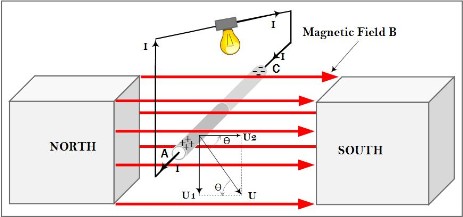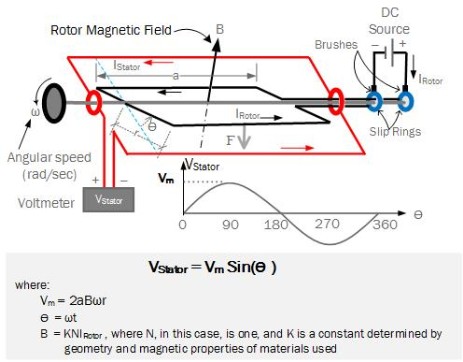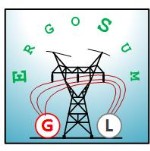Faraday Law of Induction
"What Is ?" > What Is Electric Energy ? > Energy Conversion
This law was discovered by English scientist Michael Faraday (1791-1867). About 99% of all electric energy generation in the USA is based on this law
If a conducting wire A-C is forced to move across a magnetic field “B” with velocity “U”, an electrical potential develops across the ends of the wire. If a conducting wire is used to connect the two ends to form a loop, a current “I” will flow. The higher the field “B”, the higher the velocity “U”, and the longer the wire that cuts the field, the higher the potential and, thus, the higher the current. Only the component of “U” that cuts the field at right angle (U1) contributes to the potential.

Faraday Law In Practice
There are several arrangements used in practice to take advantage of Faraday Law to generate electricity. This sketch show the essentials of the arrangements. Rotor windings rotate, driven by turbines, inside stator windings to generate electricity. In the sketch, DC current is supplied to the rotor windings to generate the magnetic field “B”. Nuclear, fossil, and some solar plants, use steam to drive the turbines. Hydro plants use water. Wind plants use wind.

